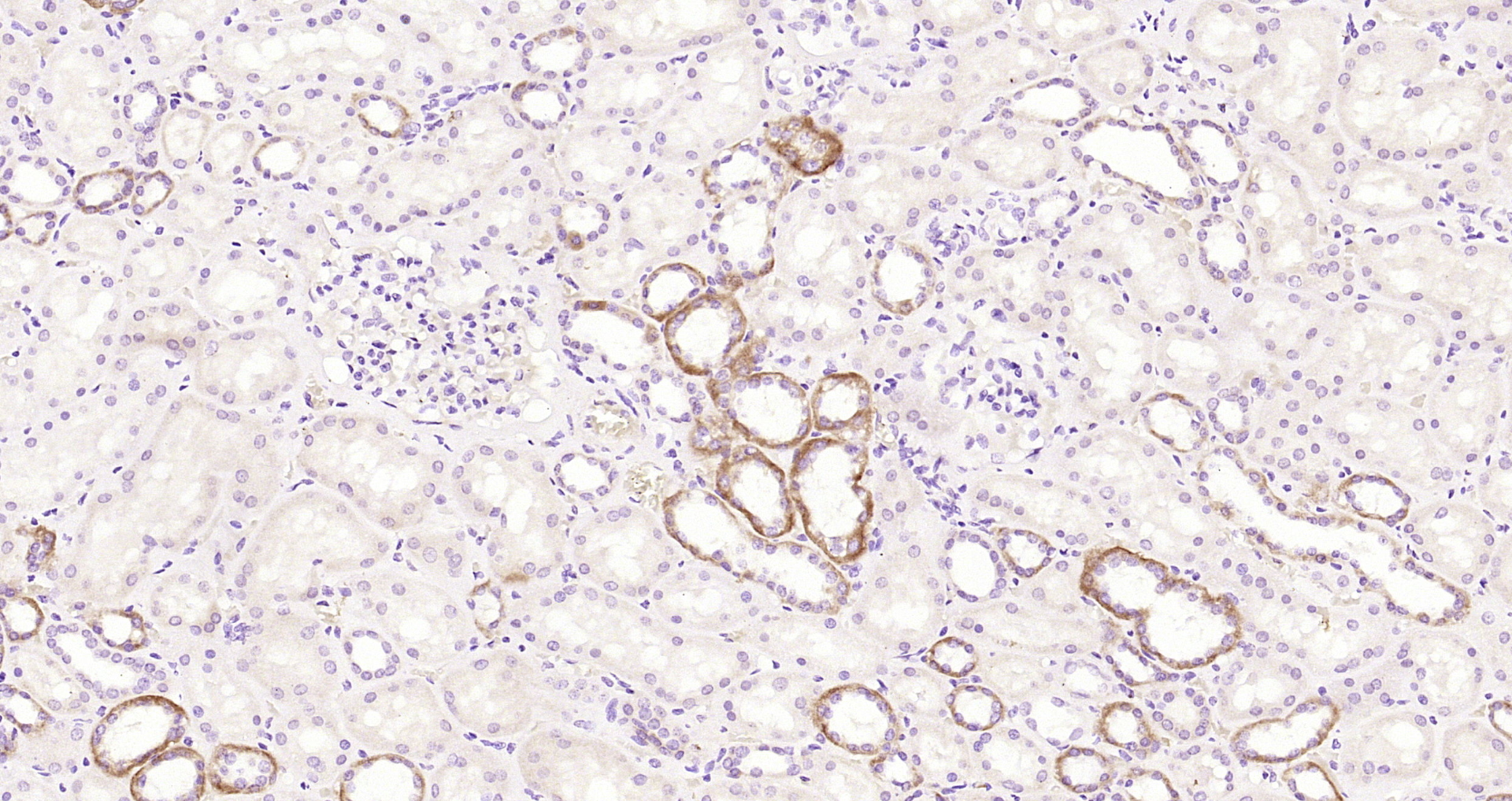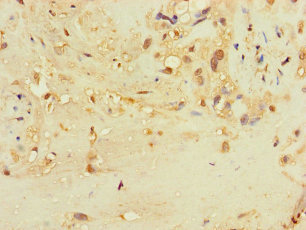
WB analysis of HeLa lysate using GTX89920 PHEMX antibody, C-term. Dilution : 2microg/ml Loading : 30microg protein in RIPA buffer
PHEMX antibody, C-term
GTX89920
ApplicationsWestern Blot
Product group Antibodies
TargetTSPAN32
Overview
- SupplierGeneTex
- Product NamePHEMX antibody, C-term
- Delivery Days Customer7
- Application Supplier NoteWB: 1-3microg/ml. *Optimal dilutions/concentrations should be determined by the researcher.Not tested in other applications.
- ApplicationsWestern Blot
- CertificationResearch Use Only
- ClonalityPolyclonal
- Concentration0.50 mg/ml
- ConjugateUnconjugated
- Gene ID10077
- Target nameTSPAN32
- Target descriptiontetraspanin 32
- Target synonymsART1, PHEMX, PHMX, TSSC6, tetraspanin-32, pan-hematopoietic expression protein, protein Phemx, tumor-suppressing STF cDNA 6, tumor-suppressing subchromosomal transferable fragment cDNA 6, tumor-suppressing subtransferable candidate 6
- HostGoat
- IsotypeIgG
- Protein IDQ96QS1
- Protein NameTetraspanin-32
- Scientific DescriptionThis gene, which is a member of the tetraspanin superfamily, is one of several tumor-suppressing subtransferable fragments located in the imprinted gene domain of chromosome 11p15.5, an important tumor-suppressor gene region. Alterations in this region have been associated with Beckwith-Wiedemann syndrome, Wilms tumor, rhabdomyosarcoma, adrenocortical carcinoma, and lung, ovarian and breast cancers. This gene is located among several imprinted genes; however, this gene, as well as the tumor-suppressing subchromosomal transferable fragment 4, escapes imprinting. This gene may play a role in malignancies and diseases that involve this region, and it is also involved in hematopoietic cell function. Alternatively spliced transcript variants have been described, but their biological validity has not been determined. [provided by RefSeq, Jul 2008]
- Storage Instruction-20°C or -80°C,2°C to 8°C
- UNSPSC12352203






